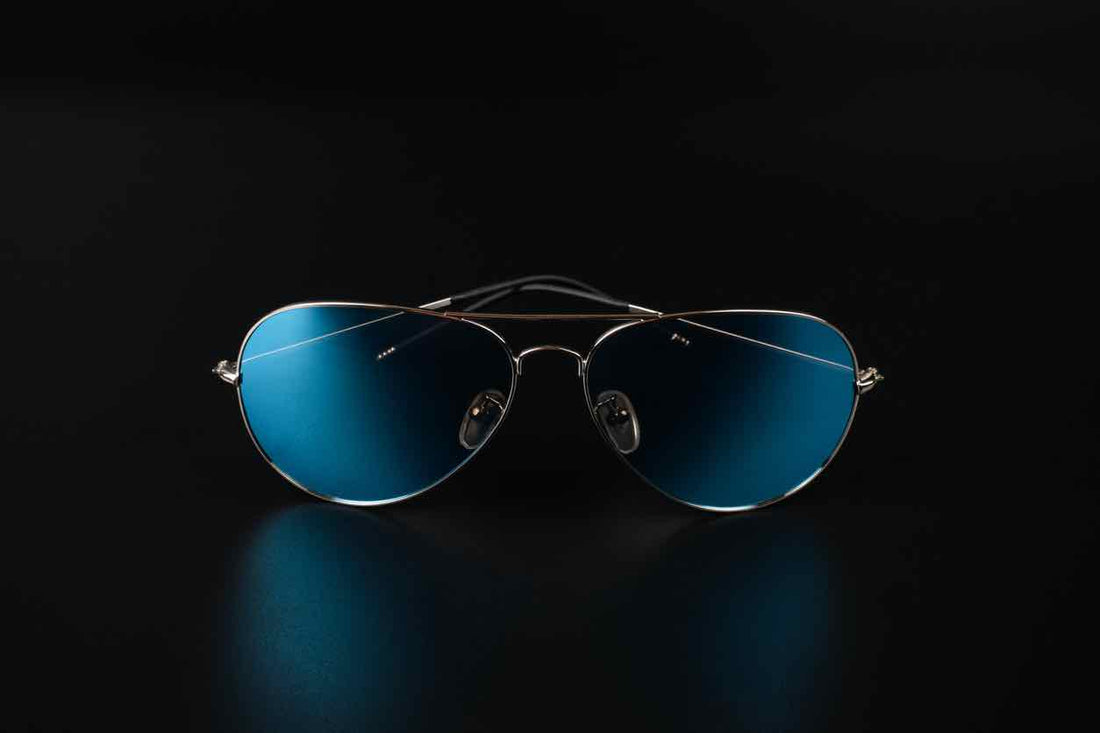In the past ten years the awareness of color blind glasses has jumped from obscurity into near ubiquity in popular culture thanks to the proliferation of viral videos showing people seeing color "for the first time" (in air quotes because this is not exactly what is happening, but more on that later...)
What is less commonly known is that 1) the invention of glasses for color blindness goes back much, much further in history, and 2) the color blind glasses seen in recent pop culture have almost no relationship to the original concept for a spectacle eyewear device to correct color blindness.
1794: John Dalton - Father of Color Blindness
The English chemist John Dalton is sometimes referred to as the "father of color blindness" or credited with the discovery of color blindness due to his writings, dating to 1794, discussion the nature of color vision deficiency from his own perspective as a person with deuteranopia, a type of severe red-green color blindness. Dalton discussed his condition and its effects on color perception, for example the appearance of certain confusing shades of colors as seen under different lighting conditions such as candlelight and sunlight. These and other observations about the nature of color blind vision were discussed in Dalton's article titled, "Extraordinary facts relating to the vision of colours". However, a shortcoming of Dalton's work was the over-reliance on personal anecdotes without a substantially testable theory of trichromatic vision. In fact, Dalton theorized that his condition of protanopia was caused by a blue pigment in his vitreous humor (the gel-like substance inside the eye); whereas a blue pigment would filter out and block red light giving rise to symptoms similar to protanopia, this theory was incorrect.
1800s: First Theories and Devices
In the 1820s significant steps forward in the theory of color vision were developed by German scientist Johann Seebeck, and in the 1850s the Scottish physicist James Clerk Maxwell, among various topics of exploration, became interested in theories of color vision and developed the first direct demonstration that a person with dichromatic-type color blindness only required two primary colors to match any chromatic stimulus.
Significantly, Maxwell also provided us with the first documented attempt to correct someone's color blindness by using a special pair of glasses, which is described in his article titled, "“Experiments on Colour, as perceived by the Eye, with remarks on Colour Blindness”. Maxwell's idea was that by wearing a spectacle eyewear device wherein each lens had an opposing tint color, the person with color blindness would perceive a color-dependent disruption to binocular fusion when viewing specific confusing colors, causing certain pairs of colors that previously may have appeared identical to the person to suddenly appear as distinct colors with the glasses.
Unfortunately for Maxwell in the 1850s glasses were not yet a common product - the manufacturing methods were entirely dependent upon intense manual labor, making the mass production and testing of these early color blind glasses impossible. It was not until more than a century later that we have seen the emergence of the first color blind glasses and color blind contact lenses in the 1970s, early 2000s and 2010-2020s.
Modern Color Blind Glasses
Today the state of color blind glasses can be broken down into three categories:
1. Color blind glasses with opposing tint filters: these have been relegated to minimal use, due to difficulty with aesthetic issues and undesirable side effects caused by excessive lens disparity.
2. Color blind glasses with "knock-out" filters: these glasses do not employ binocular disparity, but rather a kind of crude "knock out" filter that completely blocks one or more of the color bands. These types of glasses have enjoyed some growth due to their ability to enable someone to pass a color blindness screening test, however it is generally agreed by vision scientists that these glasses actually cause an overall degradation of color vision and cause additional color confusions.
3. Notch filters or "multi-notch" filters: unlike the knock-out filtering glasses, these glasses use more selective filters that can result in an overall enhancement of apparent color saturation / purity. However, a problem with such glasses is the inability to assist people with severe types of color blindness such as deuteranopia and protanopia.
An Important Disclaimer
As mentioned previously, there is an important "yes, but" to discuss related to color blind glasses - which is, these glasses are color vision assistive devices and not color vision corrective nor curative.
Many articles and other media sources (social media and print/professional media) incorrectly state that color blind glasses can cause someone to see color for the first time, and/or that the glasses are curing or correcting for color blindness. In fact, each of the types of color blind glasses listed above are limited in functionality to providing only a type of visual assistance that is partially functional, and have well understood limitations and inherent tradeoffs.
In the case of disparate lens-type glasses, the type of color vision assistance provided by the glasses comes in the form of a non-color-based visual "cue". Non-color based means that the person using the glasses may be able to discriminate between two colors that previously looked identical, but the difference cue enabling that discrimination is not due to the apparent color but rather something "else" - specifically in this case the something else is a type of depth-based cue that exploits a local disruption to stereo vision.
In the case of "knock-out" tinted lenses, the side effects are quite severe and problematic: paradoxically, the glasses can cause someone to seem to "pass" common color blind tests in particular plate tests such as the classic Ishihara plate test - while, in fact, the glasses are actually making their color vision worse by introducing new color confusions.
And finally in the case of notch-type glasses, these are dependent on the ability of the person to perceive an increased saturation of color. For types of dichromatic color vision (protanopia and deuteranopia, which together represent approximately 1/3rd of all cases of red-green color blindness), the glasses completely fail due to the inability of these types of color vision conditions to perceive the increased saturation. Additionally, the increase in saturation causes a reduction in apparent difference between nearby colors, therefore overall there is a conservation of color discriminability that is fundamentally an immutable property of vision under any passive binocularly-applied filter.
Where does VIOSENSE enter the story?
VIOSENSE eyewear are most similar to the concept originally put forth by Maxwell regarding the use of binocular rivalry to create an "added dimension" of color perception. Notably, this is the only type of color blind glasses with the potential to provide assistance to the vision of a person with a severe or dichromatic type of color blindness such as deuteranopia or protanopia.
However, VIOSENSE differs from Maxwell's idea in specific important ways: first, the induced binocular disparity is more well regulated and is designed to improve comfort for extended use rather than to just demonstrate an effect - and second, the method of filtering is based on the polarization state of light, rather than just the wavelength of light. This uniquely enables the glasses to become activated in the specific type of polarized light emitted by digital screens including computers, phones, tablets etc - while dropping back to default-non-disparate function in ordinary non-polarized light. The VIOSENSE lens technology was launched here in 2022 and is backed by our provisional patent.
In the coming years we expect the rising importance of digital tasks in everyday life to continue to drive the need for innovation in color vision assistance in the context of human-computer interaction. The space of lens innovation for color blind glasses remains an active area of development and many more forward steps are still yet to come!

